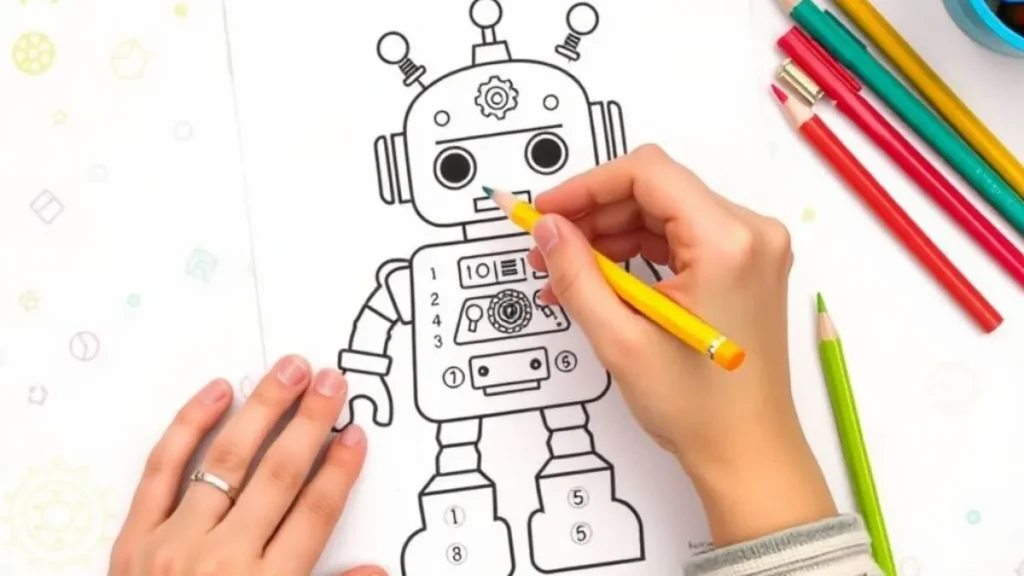As instructional tools to promote playful learning, one particular concept that stands out is Robots Dot to Dot Nattapong. It is a blend of art, robots and cognitive growth with a style that is not just captivating, but extremely educative.
If you’re an educator an adult or robot enthusiast, this article will help you get acquainted with the realm of Robots Dot to Dot Nattapong. The guide will explore the fundamental idea behind it as well as its advantages, and how it’s changing how we view STEM (Science technology, Engineering, and Mathematics) education.
Robots Dot to Dot Nattapong An Overview
In essence, Robots Dot to Dot Nattapong is an engaging activity which combines the excitement of connecting dots to form images and the fascination of robotics. The activity could appear in the form classic worksheets, digital apps and even robotic inventions which draw the shape themselves.
In contrast to traditional dot-to-dot games the concept of this one pushes the limits through the incorporation of robotics in the game, creating the perfect learning environment for educators, kids or even avid gamers.
Why Choose Dot to Dot Activities
Cognitive Benefits
Dot-to-dot games have been the norm for children’s growth. They improve focus, increase the fine motor abilities of children and help children learn sequencing with the use of numbers or letters. Then, Robots Dot to Dot Nattapong enhances these benefits even more.
- Ability to solve problems Players think logically while they work through the sequences in order to solve the challenge.
- Enhances spatial awareness The difficulty of visually interpreting the image, while connecting dots enhances spatial abilities.
- Concentration Enhancement Continuously connecting dots demands attention and discipline, improving concentration.
In combining these advantages with robots, students are exposed to the process of problem solving in a technology-driven context.
Where Art Meets Technology
The robots Dot to Dot Activities are where the imagination meets creativity and innovation. The participants aren’t simply completing the puzzle, they’re investigating how robots work. This kind of interaction encourages the critical mind, stimulates interest about technology and creates the appreciation of STEM ideas.
In providing a comprehensive and hands-on experience, students can be encouraged to engage with technology not as mere consumers instead, as creators.
How to Explore Robots Dot to Dot Nattapong
For Educators
Robots Dot and Dot Nattapong gives educators an abundance of possibilities to mix fun with learning. Teachers can use this to incorporate the game into their classes.
- customized worksheets Print sheets of dots-to-dots that feature robotics themed the study of geometry and sequencing.
- Coding The Challenge Small robots can be programmed to make dot-to-dot patterns and make the coding lesson exciting and fun.
- Interactive Activities Instruct students to create their own layouts of dots and dots helping them develop teamwork and problem-solving capabilities.
For Parents
Parents can infuse the fun of Robots Dot to Dot Nattapong to their home with creative and fun activities that blend education and bonding.
- Interactive Applications Introduce kids to digital platforms with robotic themes that provide dot-todot challenges. They often include audio and animation, which keeps youngsters active.
- Family fun Make dot-to-dot evenings into fun family activities, followed by discussion about how robots are useful in everyday day life.
- Technology and Art Time After you’ve completed the game Let children create vibrant artworks around the robots they have created, and blend the arts and STEM.
For Robotics Enthusiasts
If you are a fan of the field of robotics Robots Dot To Dot Nattapong is an exciting playground for technological innovation.
- Automation of Dot to Dot Design Make use of software to code robotics or plotters that can autonomously sketch intricate designs.
- 3D elements Create 3D dot-to-dot puzzles by using laser cutters and 3D printers for something tactile in the process.
- Hackathons as well as Contests Organise competitions in which the participants create robots capable of solving dots-to-dot games, which combine engineering and art.
The Future of Robots Dot to Dot Nattapong
The idea of Robots Dot to Dot Nattapong is just the start. Thanks to advances in augmented reality (AR) along with machine learning the possibility is unlimited.
- Virtual Reality Experiments Imagine putting on an VR headset and solving an interactive dot game in a realistic space.
- adaptive learning machine learning could be utilized to create puzzles that are more difficult and personalised, depending on the participant’s level of skill.
This combination of traditional teaching methods with modern technology is expected to provide a crucial tool to future generations of students.
Wrap Up- Nurturing Curiosity One Dot at a Time
Robots Dot-to-Dot Nattapong is much more than the game itself; it’s also an artistic bridge to modern technology. It stimulates your brain, encourages learning and gives endless opportunities for exploration and creativity. If you’re educating children in a school or bringing new ideas to the home or experimenting as an avid fan, this idea offers the ideal blend of education and fun.
Through incorporating robotics into traditional dot-to-dot games, we build an inspirational foundation to foster an ongoing love for STEM and arts.
Read Also:- brat-generator



